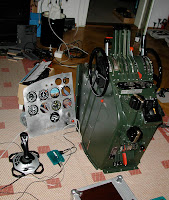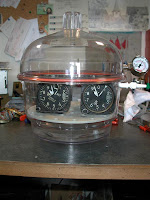 My airplane....
My airplane....... so far. After a couple of strange problems with my new USB hub, I took the old hub I used for my Mac and now all the stuff seems to work as intended. The new hub us now working under my desk and connects Mac, printer and scanner... here it works fine.
The problem was that some devices connected to the hub suddently stopped working. Plugging them out and in again cured the problem but.... other devices disappered instead. A very strange behaviour. Maybe it has to do with the USB device numbering, I don't know how the PC assigns the addresses to the USB devices... maybe it's something different.
However, there are no problems with the Keyspan 4 port hub so far.




